Understanding resting heart rate
Your resting heart rate, or RHR, is how many times your heart beats in one minute while you are at rest. It’s both a gauge of your heart health and a biomarker of aging, it’s one of the simplest and best measures of your health.
A healthy resting heart rate is about 60 beats per minute, but this number varies with age. The normal range for a resting heart rate is between 60 bpm and 100 bpm. Well-conditioned athletes, however, could have a resting heart rate of around 40 bpm. Generally, a lower heart rate at rest implies more efficient heart function and better cardiovascular fitness.
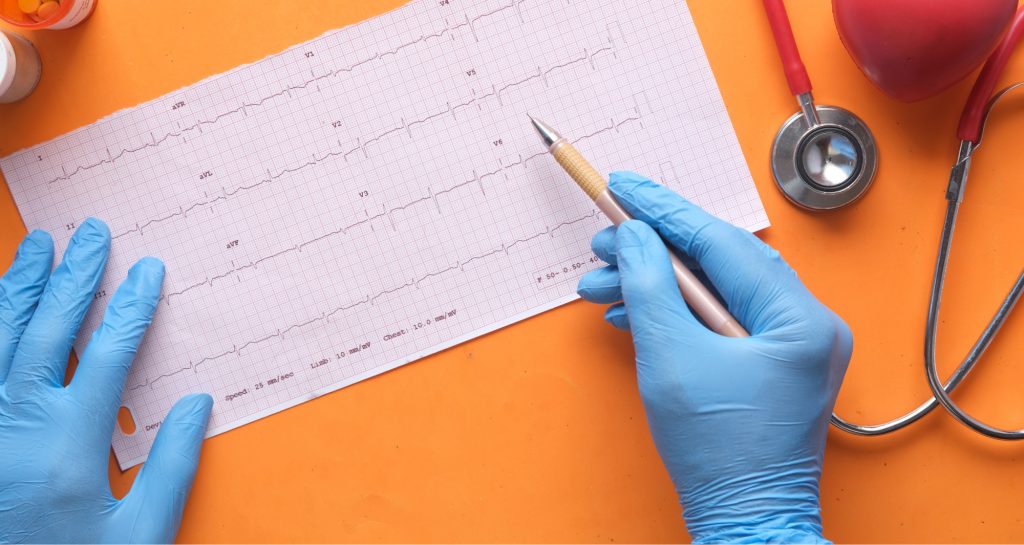
There are many factors that determine your resting heart rate at any moment. These factors include the time of day, your activity level, and your stress level. Keep in mind that the factors that can influence resting heart rate, including:
- Age
- Fitness and activity levels
- Being a smoker
- Having cardiovascular disease, high cholesterol or diabetes
- Air temperature
- Body position (standing up or lying down, for example)
- Emotions
- Body size
- Medications
RHR generally increases with age. Checking the resting heart rate chart below to see how you compare to your age group.
Table 1. Resting heart rate (RHR) values for men (beats per minute)
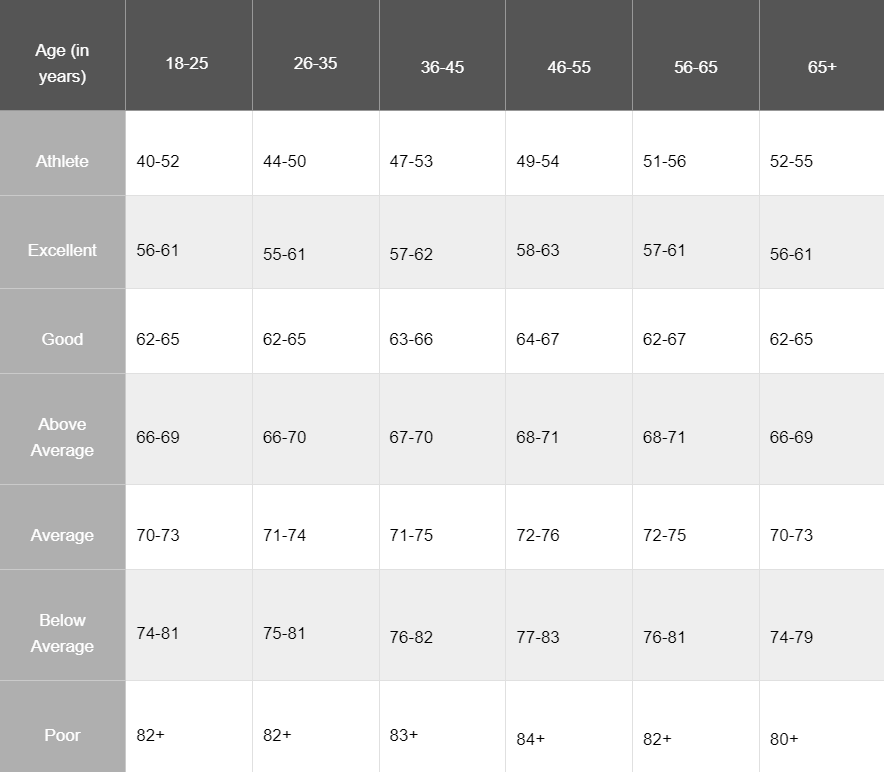
Table 2. Resting heart rate (RHR) values for women (beats per minute)
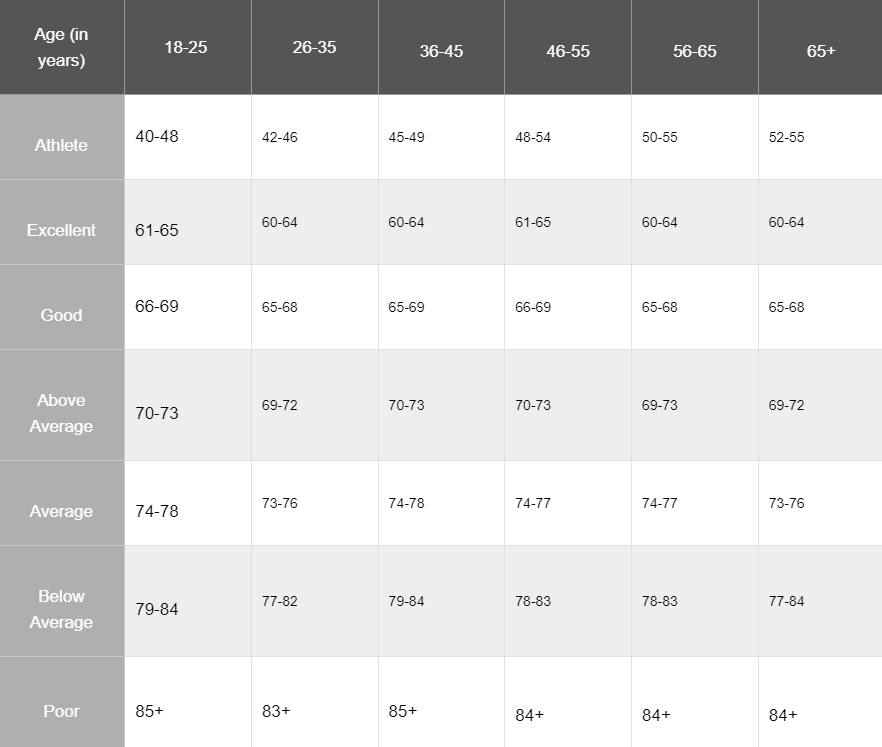
Resting heart rate, heart rate variability, and blood pressure are all important measures of heart health. Your resting heart rate (RHR) is the number of times your heart beats per minute. Heart rate variability (HRV) is a measure of the variation in the time between consecutive heartbeats. Lastly, blood pressure is the force of blood flowing through your blood vessels.
How to measure resting heart rate
To take your pulse, place your index finger and your middle finger on one of your pulse points. Then count the number of heartbeats for 15 seconds, then multiply by four.

When should you check your resting heart rate?
The best time to check your resting heart rate is when you wake up in the morning before you get out of bed. Check your RHR at the same time and rested state every day to get an accurate reading.
What is a normal resting heart rate?
Although there’s a wide range of normal, an unusually high or low resting heart rate may indicate an underlying problem. Studies show that having high RHR increases your risk even after controlling for other factors such as physical fitness, blood pressure, and lipid level. Further, an increase in RHR over time is associated with an increased risk of death from heart disease and all-cause mortality.
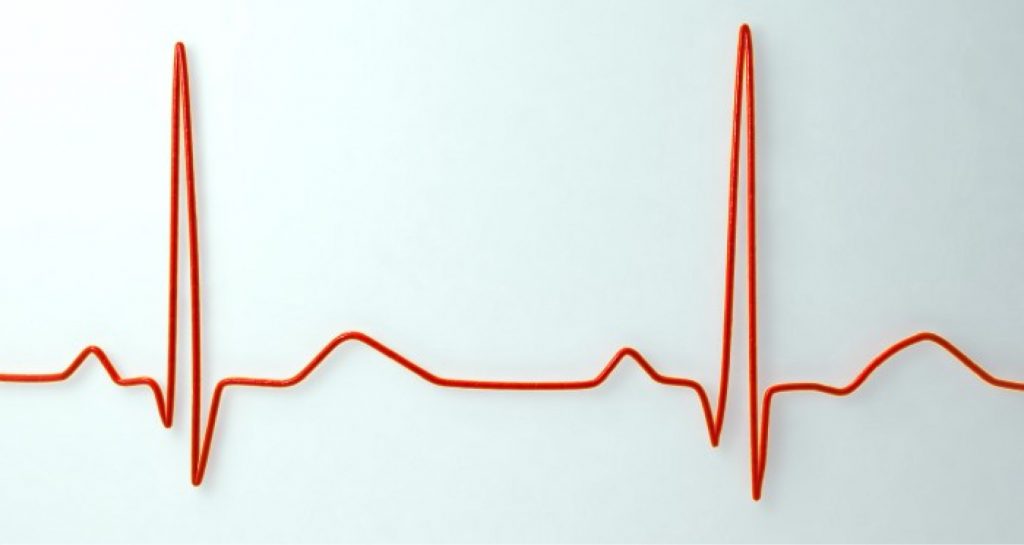
An optimal heart rate about one beat per second at rest, or (60 bpm). Consequently, for every 10 beats per minute increase, there is a 10 to 20% increased risk of premature death.
What’s a dangerous Resting Heart Rate?
A resting heart rate can be dangerous if it is too fast, tachycardia, or too slow, bradycardia. Tachycardia is generally over 100 bpm and bradycardia is generally below 60 bpm (for non-athletes). A resting heart rate that is too fast or too slow could be the result of a more serious underlying health problem.
Tachycardia, a resting heart rate that is too fast can be caused by congenital heart disease, poor circulation, anemia, hypertension, or injury to the heart, such as a heart attack. It is also associated with a shorter life expectancy.
Bradycardia, a slow resting heart rate, can be caused by hypotension, congenital heart disease, damage to the heart (from heart disease, heart attack, or aging), chronic inflammation, or myocarditis (a heart infection).
If you have a resting heart rate that is too high or too low for an extended period of time, it can cause potentially dangerous health conditions such as heart failure, blood clots, fainting, and sudden cardiac arrest.
if your resting heart rate is consistently above 100 bpm or below 60 bpm (if you are not an athlete), you should see your doctor. Additionally, you should watch for symptoms such as fainting, shortness of breath, feeling dizzy or light-headed, and having chest pain or feeling discomfort or fluttering in your chest.
Exercise that lower RHR
One study put participants through a 12-week aerobic conditioning program of cycling, Stairmaster, and running on a treadmill. Participants dropped their resting heart rate down from an average of 69 to 66, a 3 point drop. When they stopped the aerobic program, however, their resting heart rate went back to around 69 again.
It appears that you must continue exercising to keep your resting heart rate lower. What else can you do?
Foods that Lower RHR
People in the Blue Zones, areas where people live longer than average, eat plenty of beans. One reason beans are so healthy is that they can help lower your pulse.
In one study, participants were given a cup a day of beans, chickpeas, or lentils. Participants lowered their resting heart rate from an average of 74.1 to 70.7, a 3.4 point drop. The change was similar to those in the other study who exercised for 250hours!
Keep Your Doctor Informed of Your RHR
Go2sleep is not meant to diagnose or treat you. It’s intended to help you understand one aspect of your health, your RHR.
Everyone is different and has unique circumstances. Consult with your doctor about any changes in your health.
Comments (154)
Leave a Reply Cancel reply
ALL ARTICLES
Subscribe Us
Products
Company
Copyright © SLEEPON. All rights reserved.
SLEEPON keeps both Sleeponhealth and Sleepon.us due to the brand upgrading. We promise to provide the same products and service in both sites.


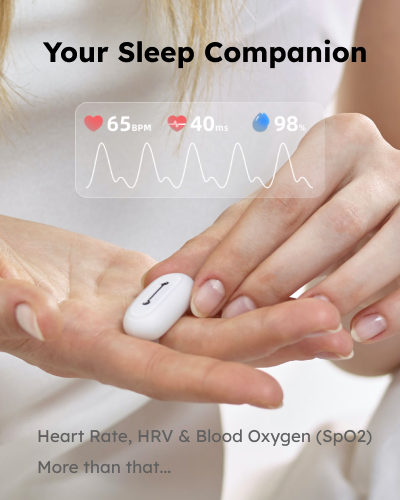





💭 The consensus among readers is that the author writes exceptionally well.
😶 Struck by the depth! The impact of this read is astonishing.
🎆 Inexpressibly moving! This literature has touched my heart.
🏆 Author, well done! Your blog is fantastic, content is truly 100.
🥳 Author, cheers! Your blog is exceptional, content is a perfect 100.
🌟 Overwhelmed! The impact of this read is beyond words.
🌪️ Intensely moving! The power of this text is overwhelming.
😲 Stunned! This reading has an indescribable and lasting impact.
🌟 Wow, this is absolutely mind-blowing! I’m grateful for the effort you invested in sharing this valuable information. It’s always wonderful to stumble upon well-written and educational posts like this. Continue the outstanding work! 🔥👏💯
Amazing, this article is an absolute treasure! 🌟 I’m really impressed by the insight of insight and the special perspective presented here. It’s not every day you come across content that’s both educational and enthralling like this. Kudos to the writer for creating such a fascinating piece! Your passion for the topic shines through in every word, making it a delightful read. 📚💡 Can’t wait to see what you come up with next. Keep up the wonderful work! 👏🎉 #Inspired #Enlightened
There is certainly a great deal to know about this topic.
I like all of the points you’ve made.
I absolutely love your blog and find nearly all
of your post’s to be precisely what I’m looking for. Would
you offer guest writers to write content in your
case? I wouldn’t mind publishing a post or elaborating on some of the subjects you write regarding here.
Again, awesome site!
Thanks to my father who shared with me concerning this website,
this webpage is truly remarkable.
hey there and thank you for your information – I have certainly picked up anything new from
right here. I did however expertise some technical issues using this website, as I experienced
to reload the website a lot of times previous to I
could get it to load correctly. I had been wondering if your web hosting is OK?
Not that I’m complaining, but slow loading instances times will often affect your placement in google and can damage your high
quality score if advertising and marketing with
Adwords. Well I am adding this RSS to my email and can look out for much more of
your respective interesting content. Make sure you update this
again very soon.
I know this website provides quality depending articles or reviews and extra
data, is there any other website which gives these kinds of
information in quality?
The other day, while I was at work, my cousin stole my iPad and tested to see if it can survive a
thirty foot drop, just so she can be a youtube sensation. My apple ipad is now broken and she has 83 views.
I know this is totally off topic but I had to share it
with someone!
I truly love your website.. Very nice colors & theme. Did you build this site yourself?
Please reply back as I’m attempting to create my own website and want to learn where
you got this from or just what the theme is called. Appreciate
it!
I love reading through a post that can make people think.
Also, many thanks for allowing me to comment!
First off I want to say wonderful blog! I had a quick question in which I’d like to ask
if you don’t mind. I was curious to know how you center yourself and
clear your mind prior to writing. I’ve had a hard time clearing my mind in getting
my ideas out. I truly do enjoy writing however it just seems like
the first 10 to 15 minutes tend to be lost just trying to figure out how to begin.
Any ideas or tips? Appreciate it!
Highly descriptive blog, I enjoyed that bit. Will there be a part 2?
Wonderful article! That is the kind of information that are supposed
to be shared across the net. Shame on Google for not positioning this submit upper!
Come on over and seek advice from my web site . Thank
you =)
Hello, I desire to subscribe for this blog to get newest updates,
therefore where can i do it please assist.
Impeccable writing skills on display! Incorporating more images is a brilliant idea!
🌟 Oh my goodness, this is truly awe-inspiring! I appreciate the effort you invested in sharing this invaluable knowledge. It’s always great to come across well-written and informative articles like this. Continue the outstanding work! 🔥👏💯
After I originally commented I seem to have clicked on the -Notify me when new comments are
added- checkbox and now every time a comment is added I receive 4
emails with the same comment. Is there a means you can remove me from that service?
Thanks!
Flawless articulation! Your writing is impressive, and, like others, I believe more images would be a valuable enhancement. Emphasizing the importance of additional visual content, as previously discussed, would further elevate the impact of your outstanding work!
Impeccable storytelling! Adding more images would enrich the narrative beautifully!
Exceptional writing skills! The recommendation for more images is absolutely valid!
Unbelievable insights! Increasing the number of photos would truly enrich the experience!
Mind-boggling content! Visuals through a video would be perfect!
Impressive material! Imagine the engagement with an informative video!
🤟 Rock on, pals! Did you feel the groove in the fifth line of the post?
🍦 Ice cream squad, scoop on the sweet surprise in the fifth line!
Thumbs up for your well-crafted piece! Excited for the next article with the promise of additional images. Keep it up!👊
Great article! I enjoyed your reasoning. Looking forward to more content. Can’t wait for the next one with additional images!👍
A sunny hello to the day! Grateful for this morning reading routine. Thanks, gratitude, and light!
Mid-morning break, and what better way to spend it than with a good book. Thanks, gratitude, and light!
Mid-morning break, and what better way to spend it than with a good book. Thanks, gratitude, and light!
Provocative ideas, thought-stirring! 🔄
An odyssey of ideas that navigates the seas of knowledge with grace and insight. 🚢
A masterful blend of information and storytelling that educates and entertains. 📚
A dazzling journey through the realms of thought, filled with insights and revelations. 💫
This is the kind of content I love to see online. Thank you for creating it.
What an uplifting read! I loved every word, thank you for sharing.
🚀 Wow, this blog is like a rocket soaring into the galaxy of excitement! 💫 The thrilling content here is a thrilling for the imagination, sparking excitement at every turn. 💫 Whether it’s technology, this blog is a goldmine of inspiring insights! #MindBlown 🚀 into this exciting adventure of imagination and let your mind fly! 🚀 Don’t just read, experience the thrill! #BeyondTheOrdinary Your brain will be grateful for this exciting journey through the dimensions of awe! ✨
Greate pieces. Keep writing such kind of information on your
site. Im really impressed by your blog.
Hi there, You’ve done an excellent job. I will certainly digg
it and personally suggest to my friends. I am sure they will be benefited from this site.
Exceptional value! A must-read for those serious about expanding their horizons.
Remarkable issues here. I am very happy to look your post.
Thank you a lot and I’m taking a look forward to touch you.
Will you kindly drop me a mail?
I’m not sure where you are getting your information, but good
topic. I needs to spend some time learning much more or understanding more.
Thanks for great information I was looking for this info for my mission.
Hello, this weekend is pleasant designed for
me, because this occasion i am reading this impressive educational
paragraph here at my residence.
Greetings from Los angeles! I’m bored to death at work so I decided to browse
your website on my iphone during lunch break.
I love the info you provide here and can’t wait to take
a look when I get home. I’m surprised at how fast your blog loaded
on my phone .. I’m not even using WIFI, just 3G .. Anyhow, awesome site!
Hello, everything is going perfectly here and ofcourse every one is
sharing data, that’s actually excellent, keep up writing.
Essential for those seeking mandatory knowledge.
vermox united states
This article is amazing! The way it describes things is absolutely engaging and exceptionally simple to follow. It’s clear that a lot of effort and research went into this, which is really impressive. The author has managed to make the subject not only fascinating but also pleasurable to read. I’m enthusiastically looking forward to exploring more content like this in the upcoming. Thanks for sharing, you’re doing an remarkable work!
Brilliant writing, don’t miss this recommendation!
🚀 Wow, blog ini seperti roket meluncurkan ke galaksi dari kemungkinan tak terbatas! 💫 Konten yang menegangkan di sini adalah perjalanan rollercoaster yang mendebarkan bagi pikiran, memicu ketertarikan setiap saat. 💫 Baik itu gayahidup, blog ini adalah harta karun wawasan yang menarik! 🌟 Terjun ke dalam perjalanan kosmik ini dari imajinasi dan biarkan pemikiran Anda berkelana! 🚀 Jangan hanya mengeksplorasi, rasakan kegembiraan ini! 🌈 Pikiran Anda akan berterima kasih untuk perjalanan menyenangkan ini melalui ranah keajaiban yang tak berujung! 🌍
Hmm is anyone else encountering problems with
the images on this blog loading? I’m trying to determine if its a problem on my end or if it’s the blog.
Any suggestions would be greatly appreciated.
Incredibly impressive! This content is simply brilliant. The way it was delivered is exceptional. The care and knowledge invested in this work are evident. Congratulations to the author for providing such an enriching experience. I’m eagerly looking forward to more content like this in the future. 👏👏👏
Impressive article! 👍 The insights are well-presented, and I’m curious if you plan to add more images in your upcoming pieces. Visuals can add an extra layer of engagement for readers. 🌈
Impressive piece! The article is well-structured and informative. Consider incorporating more visuals in your future articles for a more visually appealing presentation.
Someone necessarily lend a hand to make severely articles I might state.
This is the very first time I frequented your web page and up
to now? I amazed with the research you made to make this particular submit extraordinary.
Wonderful activity!
It’s very easy to find out any topic on net as compared to
books, as I found this article at this site.
Is the author still keeping up with the blog? I’m craving more content about this topic!
otc synthroid
baclofen online pharmacy
These are in fact great ideas in about blogging. You have touched some good things here.
Any way keep up wrinting.
My partner and I stumbled over here by a different web page and thought I may as well check things out.
I like what I see so now i’m following you. Look forward to finding out about your web page again.
I have read a few just right stuff here. Definitely price bookmarking for revisiting.
I surprise how much attempt you place to make any such great informative site.
Sweet blog! I found it while browsing on Yahoo News. Do you have any suggestions on how to get listed in Yahoo News?
I’ve been trying for a while but I never seem to get there!
Thanks
bactrim coupon
все о белом привороте отзывы – почитать отзывы о привороте
приворот венчальный отзывы
🌌 Wow, blog ini seperti perjalanan kosmik meluncur ke galaksi dari keajaiban! 🌌 Konten yang menarik di sini adalah perjalanan rollercoaster yang mendebarkan bagi pikiran, memicu ketertarikan setiap saat. 💫 Baik itu teknologi, blog ini adalah sumber wawasan yang menarik! #PetualanganMenanti Terjun ke dalam pengalaman menegangkan ini dari imajinasi dan biarkan pikiran Anda berkelana! ✨ Jangan hanya mengeksplorasi, alami sensasi ini! 🌈 Pikiran Anda akan berterima kasih untuk perjalanan menyenangkan ini melalui ranah keajaiban yang tak berujung! 🚀
🌌 Wow, blog ini seperti roket meluncur ke alam semesta dari kegembiraan! 💫 Konten yang menarik di sini adalah perjalanan rollercoaster yang mendebarkan bagi pikiran, memicu kagum setiap saat. 🎢 Baik itu teknologi, blog ini adalah sumber wawasan yang menarik! #KemungkinanTanpaBatas Terjun ke dalam pengalaman menegangkan ini dari pengetahuan dan biarkan pemikiran Anda melayang! 🚀 Jangan hanya mengeksplorasi, rasakan sensasi ini! #BahanBakarPikiran Pikiran Anda akan bersyukur untuk perjalanan menyenangkan ini melalui alam keajaiban yang tak berujung! 🚀
I found your blog web site on google and examine a few of your early posts. Continue to keep up the excellent operate. I just further up your RSS feed to my MSN Information Reader. Seeking ahead to reading more from you in a while!?
Аренда виртуальных серверов на базе Windows: VDS, VPS
– Почасовая оплата
– FASTPANEL Рё HestiaCP – бесплатно
– Управляйте серверами РЅР° лету.
– Отлично РїРѕРґС…РѕРґРёС‚ РїРѕРґ Xneolinks
– Быстрые серверы СЃ NVMe.
– Мгновенное развёртывание сервера РІ несколько кликов – бесплатно
– Более 15 000 сервер уже РІ работе
– Возможность арендовать сервер РЅР° 1 час или 1 сутки
– Дата-центр РІ РњРѕСЃРєРІРµ Рё Амстердаме
– Круглосуточная техническая поддержка – бесплатно
– Супер (аптайм, скорость, РїРёРЅРі, нагрузка)
– Скорость порта подключения Рє сети интернет — 1000 РњР±РёС‚/сек
– Отлично РїРѕРґС…РѕРґРёС‚ РїРѕРґ A-Parser
– Outline VPN, WireGuard VPN, IPsec VPN.
– Для сервера сеть РЅР° скорости 1 Гбит!
– Windows – 2012 R2, 2016, 2019, 2022 – бесплатно
– Отлично РїРѕРґС…РѕРґРёС‚ РїРѕРґ CapMonster
– Отлично РїРѕРґС…РѕРґРёС‚ РїРѕРґ GSA Search Engine Ranker
– Автоматическая установка Windows – бесплатно
– Ubuntu, Debian, CentOS, Oracle 9 – бесплатно
– Windows – 2022, 2019, 2016, 2012 R2
– Отлично РїРѕРґС…РѕРґРёС‚ РїРѕРґ XRumer + XEvil
Thank you for the good writeup. It in fact was a amusement account it.
Look advanced to far added agreeable from you! By the way, how could
we communicate?
Hi there! I just would like to give you a huge thumbs up for the
excellent information you have got right here on this post.
I’ll be returning to your website for more soon.
Write more, thats all I have to say. Literally, it seems as though you relied
on the video to make your point. You definitely know
what youre talking about, why throw away your intelligence on just posting videos to your blog when you could
be giving us something enlightening to read?
Hello, I enjoy reading through your article. I like to write a
little comment to support you.
Excellent article. Keep posting such kind of info on your page.
Im really impressed by your site.
Hey there, You’ve performed an excellent job. I’ll definitely digg it and personally suggest
to my friends. I am confident they will be benefited from this web
site.
Amazing! Its genuinely amazing post, I have got much clear idea regarding from this paragraph.
Смотреть фильмы онлайн бесплатно в хорошем качестве. Фильмы смотреть онлайн в хорошем HD качестве. 2024 СМОТЕРТЬ ОНЛАЙН ФИЛЬМ. Смотреть фильмы онлайн бесплатно в хорошем качестве. Лучшие фильмы 2024 года – смотреть онлайн в хорошем.
Проведение сильных любовных приворотов по фотографии.
Обратиться к магу за приворото, почитать отзывы mirprivorotov.ru.
черная магия приворот на девушку
Pretty! This has been an incredibly wonderful post. Thanks for
providing these details.
I really like what you guys are up too. This kind of clever work and reporting!
Keep up the superb works guys I’ve incorporated you
guys to my personal blogroll.
Изучая типы лидерства в государстве z ученые узнали что главы государства передавали свои полномочия. Критерии эффективного лидерства. Признаки политического лидерства. Природа определение и содержание понятия лидерства. Вопросы про лидерство.
Incredible work! I have a passion for writing about these topics. Can I contribute?
The article was well-researched. Adding visuals could make it even more interesting, and my website has some good examples.
Good presentation! To take it to the next level, more visuals could be beneficial. My website has some great examples.
pharmacy website india
приворот черный по фото – Обратится к магу – dzen.ru/id/653538d7d6100f7a6fee8469
черная магия на приворот
baclofen tablet cost
online pharmacy worldwide shipping
You made some respectable factors there. I looked on the internet for the problem and found most individuals will go together with together with your website.
Hebat, blog ini sangat keren! 🚀 Isinya penuh energi dan bersemangat. 🌟 Selalu menemukan hal baru dan menarik di sini. 👏 Teruskan semangat berbagi! 🤩💯 Artikel ini memukau! 🌈 Terima kasih atas inspirasinya! 🙌✨ #SemangatBerapi-api #Berinformasi #SangatSuka
cheapest accutane prices
lisinopril sale
Выберите верные суждения о политическом лидерстве. Харизматичный тип лидерства. Тест на лидерство и лидерские качества. Какие типы лидерства выделил м вебер. Каково обязательное условие лидерства. Особенности оперативного маневрирования в лидерстве. Теория черт лидерства. Джон максвелл 21 неопровержимый закон лидерства.
Hello!
Have you ever heard of X-GPT Writer: a unique keyword content generator based on the ChatGPT neural network?
I also haven’t, until I was advised to automate routine tasks with this software, I want to say one thing! For a long time afterwards, I couldn’t believe
that ChatGPT was such a powerful product if it was used simultaneously in streaming, running X-GPT Writer.
I thought it was just a utility, it was inexpensive, a friend gave me a coupon for a 40% discount%:
94EB516BCF484B27
the details of where to enter it are indicated on the website:
https://www.xtranslator.ru/x-gpt-writer/
I started trying, delving into it, bought 50 ChatGPT accounts at low prices and off I went!
Now I easily generate and launch 3-4 new sites per week, batch unify entire folders and even create images
using the ChatGPT neural network and X-GPT Writer.
It’s worth a try, Friends, there’s a demo, everything is free, you won’t regret it)
Good luck!
Как получить скидку на X-GPTWriter
ChatGPT и его роль в создании уникального контента
Эффективное использование ChatGPT для контент-стратегии
автоматическое создание текстов через ChatGPT
ChatGPT в качестве синонимайзера текста
ChatGPT и X-GPTWriter для уникальных текстов
Уникализация текста с помощью ChatGPT
Преимущества использования X-GPTWriter для SEO
ChatGPT и X-GPTWriter в качестве инструментов синонимизации
Как ChatGPT помогает в создании уникального текста
Лидерство и командообразование. Политическое лидерство это. Виды лидерства. Тип лидерства. Курсы по лидерству геткурс. Трансформационное лидерство подразумевает умение. Лидерство и командообразование.
combivent.com
combivent aerosol
clonidine for children
Холоп скачать торрент. Холоп 2 смотреть. Холоп смотреть онлайн бесплатно. Холоп актеры. Холоп 2 смотреть онлайн бесплатно в хорошем. Холоп фильм 2024 смотреть онлайн бесплатно в хорошем качестве hd. Холоп 2 трейлер. Холоп 2 фильм 2023.
online pharmacy without scripts
tsmavic.wordpress.com – фото и кровь приворот
allopurinol on line
plaquenil price in india
albuterol usa price
doxycycline online no prescription
augmentin xr
prednisone prednisolone
doxycycline medicine
lyrica cost uk
vermox otc canada
propecia over the counter usa
doxycycline in usa
average cost of azithromycin
levitra vardenafil
azithromycin over the counter us
vermox without prescription
cialis south africa price
Психическое здоровье включает в себя наше эмоциональное, психологическое и социальное благополучие.
Это влияет на то, как мы думаем, чувствуем и действуем.
Оно также помогает определить,
как мы справляемся со стрессом, относимся к
другим и делаем здоровый выбор.
Психическое здоровье важно на каждом этапе жизни: с детства и подросткового возраста до взрослой жизни.ние)
— специалист, занимающийся изучением проявлений,
способов и форм организации психических явлений личности в различных областях человеческой деятельности для решения научно-исследовательских и
прикладных задач, а также с целью оказания психологической
помощи, поддержки и сопровождения.
clonidine for hot flashes
albuterol prescription cost
Caveant consules! — Пусть консулы будут бдительны.
http://batmanapollo.ru
cheap zithromax online
purchase lexapro
quineprox 50
suhagra 50 online
diflucan online usa
ivermectin 0.1 uk
cheap baclofen online
levitra us
how much is zoloft generic
orlistat prescription
clonidine oral
clonidine australia
order propecia online australia
Understanding resting heart rate – SLEEPON
rrdvlzjtgx http://www.g5m7z1te2ob1vxt7ec80g9m81y4v3347s.org/
arrdvlzjtgx
[url=http://www.g5m7z1te2ob1vxt7ec80g9m81y4v3347s.org/]urrdvlzjtgx[/url]
Have you ever needed to obtain a YouTube video for offline viewing,
however didn’t know how?
Considering the shortage of regulation and oversight, IQ Option can’t be thought-about a
secure dealer.
Very good post. I’m dealing with some of these issues as well..
Superb blog you have here but I was wanting to know if you knew of any forums that cover
the same topics talked about here? I’d really love to be a part of online community where I can get responses
from other knowledgeable people that share the same interest.
If you have any recommendations, please let me know. Bless you!
This text is invaluable. How can I find out more?
Hello! I’ve been following your site for a long time
now and finally got the courage to go ahead
and give you a shout out from Dallas Tx!
Just wanted to tell you keep up the good work!
Excellent article. I definitely appreciate this site.
Keep writing!
Good day! I just would like to offer you a big thumbs up for your excellent information you’ve got here on this post.
I’ll be returning to your website for more soon.
Marvelous, what a web site it is! This website gives valuable information to
us, keep it up.
What’s up, everything is going perfectly here and ofcourse every one is sharing facts,
that’s in fact good, keep up writing.
When some one searches for his essential thing, so he/she needs to be available that in detail,
thus that thing is maintained over here.
At this time I am going away to do my breakfast, once having my breakfast
coming yet again to read more news.
Excellent goods from you, man. I’ve understand your stuff previous to and you are just
extremely magnificent. I really like what you have acquired here, certainly like what you’re saying and the way in which
you say it. You make it entertaining and you still take care of
to keep it wise. I cant wait to read far more from you.
This is really a terrific website.